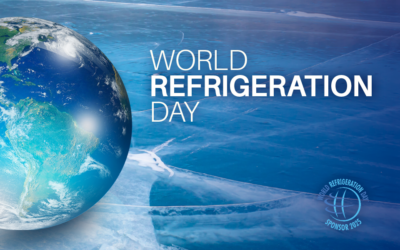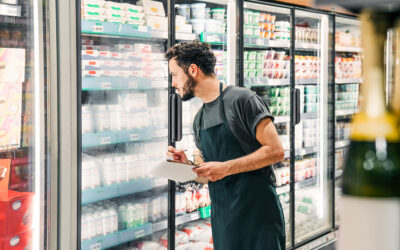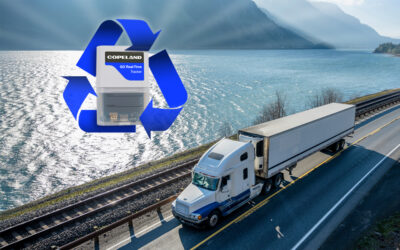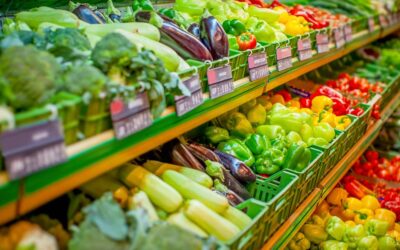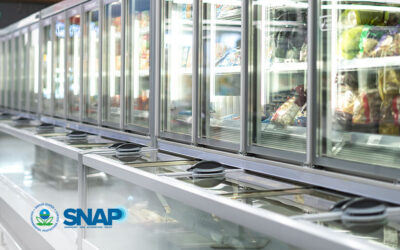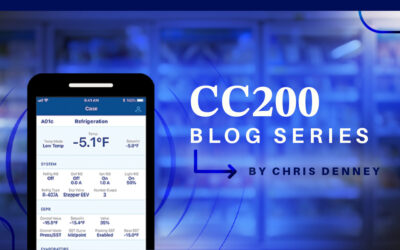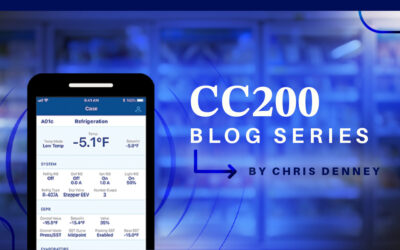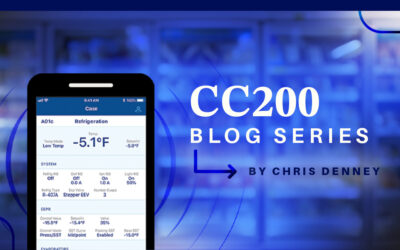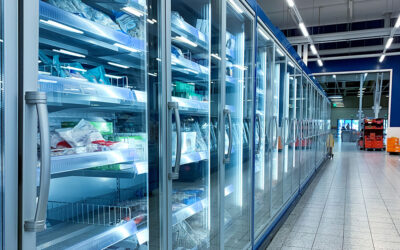Feature Post
Celebrating World Refrigeration Day 2025
Discover why HVACR matters this World Refrigeration Day. Explore the 2025 theme ‘Cool Skills’ and Copeland’s commitment to advancing sustainable solutions.
Electrical component considerations for A2L system safety
Electrical component considerations for A2L system safety As a new refrigerant category in the commercial refrigeration sector, the A2L “lower flammability” classification comes with unique considerations. Specifying engineers and contractors need to know the new...
Recycling Program Contributes to Supply Chain Sustainability
Throughout the perishable food supply chain, environmental, social, and governance (ESG) initiatives are driving companies to implement more sustainable practices in all aspects of their operations. Often, this means uncovering issues with existing processes and selecting preferred business partners that help to support a greener supply chain. Emerson is committed to being such a partner.
8 proven strategies for rigorous cold chain management
Preparing for the approval and safe use of A2Ls in commercial refrigeration applications Maintaining consistently high food quality standards is a determining factor of supermarket success, impacting both customer loyalty and bottom-line profitability. Although...
A2L refrigerant regulation updates: what you need to know today
Preparing for the approval and safe use of A2Ls in commercial refrigeration applications The move from hydrofluorocarbon (HFC) refrigerants to lower-global warming potential (GWP) alternatives is picking up speed in U.S. HVACR sectors. Many of the new options are...
Address Efficiency Mandates with Compression Technologies
Strategies for complying with DOE and ENERGY STAR® in self-contained and remote condensing units As the industry awaits the Department of Energy’s (DOE) next energy conservation rulemaking in self-contained equipment and remote condensing refrigeration systems —...
Protection for high-value shipments just got even better
We’re excited to announce the release of Copeland’s newest real-time tracker, the GO Real-Time 4G/5G-NA. Whether you’re transporting food, health care items or other high-value products, this technology helps ensure your shipments are delivered at the highest possible...
Three proven strategies to prevent cargo theft
The over-the-road (OTR) transport industry is experiencing a surge in cargo thefts. As thieves combine straight theft with more sophisticated robbery schemes, stakeholders will need to implement robust tracking and geofencing technologies to better protect shipments....
Four Keys to Successful Cold Chain Shipping
When shipping fresh and frozen perishable food products, maintaining consistent temperatures throughout the cold chain journey is imperative to protecting both food quality and safety.
Industrial Heat Pumps Deliver Sustainability, Lifecycle Benefits in Food and Beverage Industry
The food and beverage industry faces increasing pressure to reduce scope 1, 2 and 3 emissions. In addition to the need to comply with national and regional regulations, many organizations have set internal sustainability targets as part of their environmental, social...
Strong Sustainability Tailwinds Drive CO2 Growth in the Industrial Sector
Strong Sustainability Tailwinds Drive CO2 Growth in the Industrial Sector Natural refrigerants have a long history in the industrial refrigeration sector. Chosen for its excellent performance characteristics and operational reliability, ammonia (R-717) has been an...
EPA SNAP Rule 26 Approves, Modifies Use Conditions for A2L and A3 Refrigerants
On May 28, the Environmental Protection Agency (EPA) pre-published its Significant New Alternatives Policy (SNAP) Rule 26, adding to the list of allowable refrigerants that can be used in commercial and industrial refrigeration sectors.
10 Innovations Transforming Retail Operations
Significant research and development (R&D) are underway to address these converging challenges. In a recent article for Progressive Grocer, I outlined 10 innovations that are poised to transform the future of retail operations.
Refrigerant Transition Highlights the Importance of Leak Detection
Although detecting and minimizing leaks in commercial refrigeration equipment have always been important goals, they’re about to become even more critical. As I discussed in a recent article for Engineered Systems, the transition to the next generation of refrigerants creates important considerations — for both legacy and emerging systems.
Let the Refrigerant Phase-in Begin
As I noted in a recent article for Contracting Business, the next generation of refrigeration equipment will be more diverse, with no one-size-fits-all solution. Proven eco-friendly refrigerants CO2 (or R-744) and R-290 (aka propane) — as well as emerging A2L options — are among the most likely successors capable of meeting needed global warming potential (GWP) reductions.
Simplify Refrigerated Case Servicing and Troubleshooting
Effective troubleshooting is a fundamental skillset for service technicians responsible for keeping refrigerated cases running at peak performance. They need tools to help them quickly set up new cases and diagnose issues in existing units — stabilizing air temperatures, superheat and defrost schedules — all while minimizing in-store disruptions. The Copeland CC200 case controller was designed with these priorities in mind. In the last blog of our Innovations in Case Control series, I review how its powerful combination of software, hardware and mobile app provides a robust collective toolset for simplifying every aspect of servicing and troubleshooting.
Exploring the Advanced Functionality of the CC200 Case Controller
In the first blog of our Innovations in Case Control series, I reviewed the hardware components, technician-friendly features and performance benefits of Copeland’s new CC200 case controller . Designed with modular, pluggable components, it enables control of up to three evaporators or an electronic evaporator pressure regulator (EEPR) valve for multiple types of cases. In this blog, I explore how this robust case control platform regulates superheat, manages EEPR valves, and provides advanced CO2-ready functionality. To dive deeper into these topics, please view our companion CC200 video series.
Innovations in Refrigerated Case Control — CC200 Case Controller Video and Blog Series
Electronic controls have become essential components in modern commercial refrigeration equipment. Driven by the needs to simplify maintenance, increase performance and reliability, transition to lower-GWP refrigerants, and optimize energy efficiency, system and case controls are enabling a new era of refrigeration management — for end users and service technicians alike.
Connected Tech Can Help Overcome Chain Store Challenges
In a recent article, we explored five ways connected, cloud-based internet of things (IoT) technologies are evolving to address nearly every facet of chain store operations by simplifying store operations, automating labor-intensive tasks, and streamlining enterprise management.
Reviewing Proposed Energy Efficiency Standards for Ice Machines
Earlier this year, the Department of Energy (DOE) published a notice of proposed rulemaking (NOPR) outlining new energy conservation standards for automatic commercial ice makers (ACIMs). The proposal calls for energy reductions up to 30 percent, which would apply to most of the ACIM equipment currently on the market. In a recent article for QSR Magazine, I explored the implications of this new DOE proposal within the context of an already dynamic regulatory climate.
